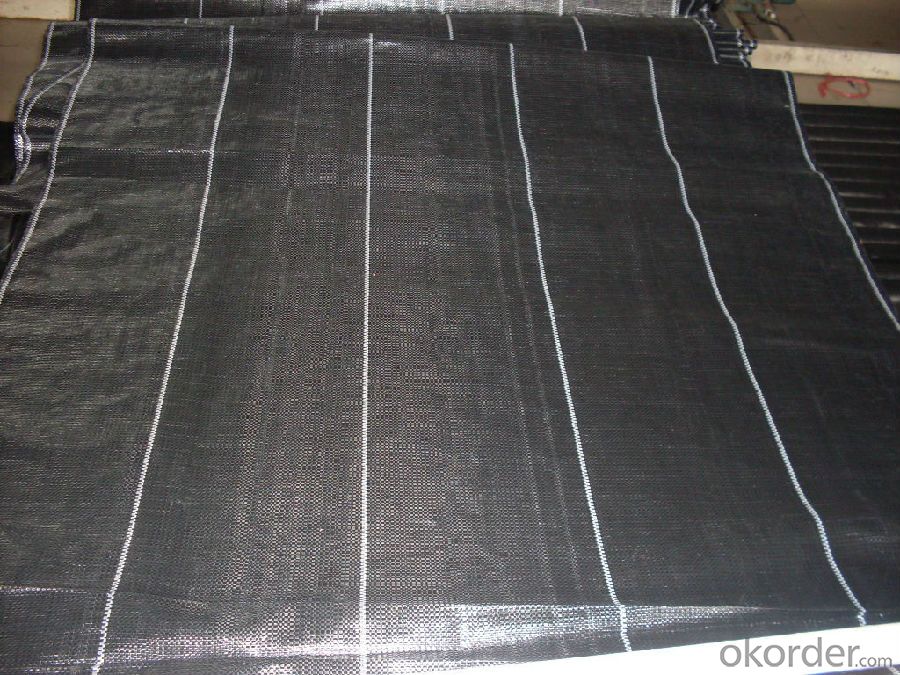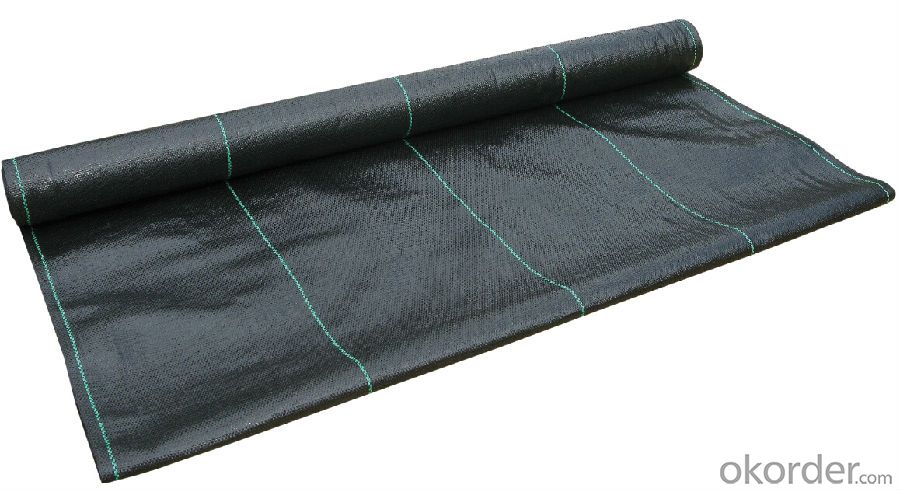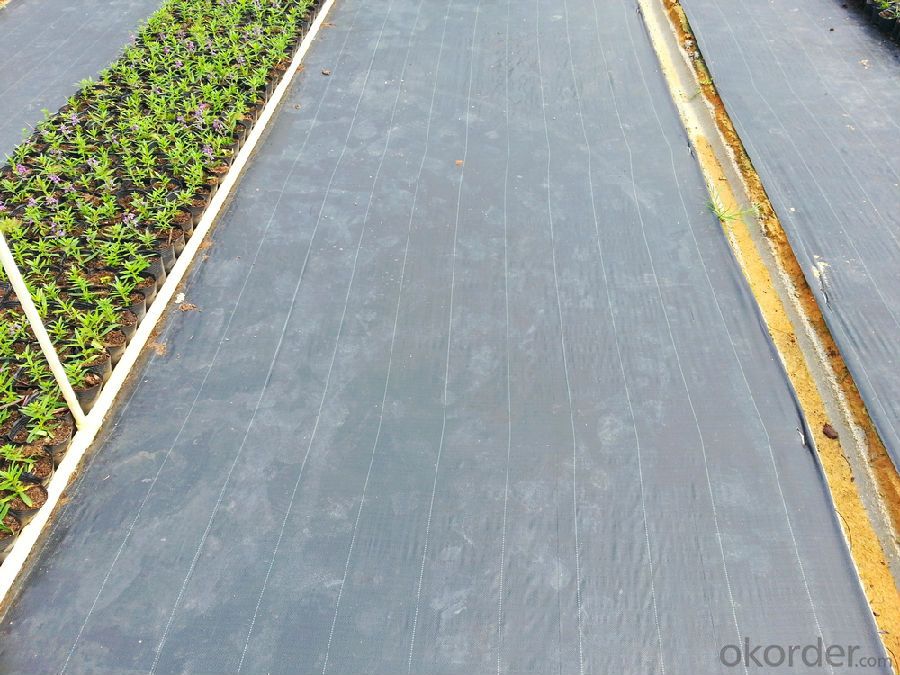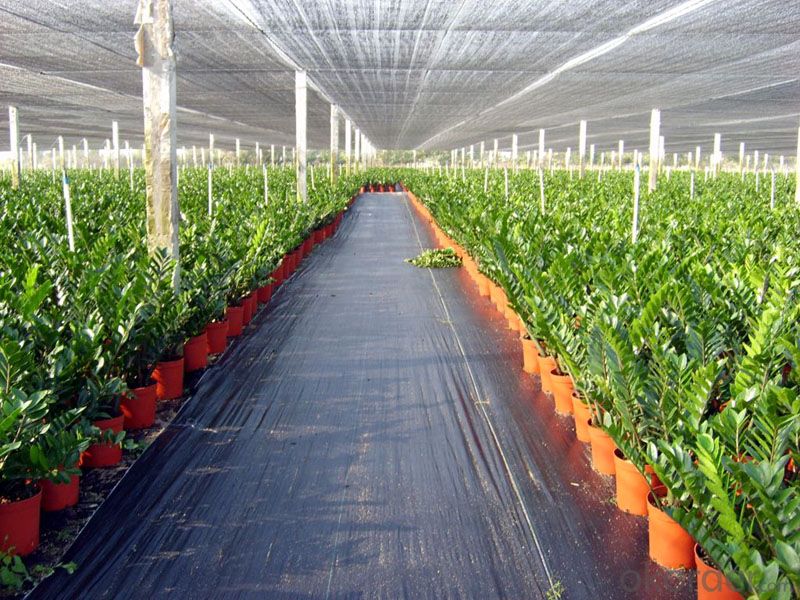PP Woven Fabric/ Groundcover fabric/ Weed Barrier
- Loading Port:
- China main port
- Payment Terms:
- TT or LC
- Min Order Qty:
- 5000 m²
- Supply Capability:
- 1000000 m²/month
OKorder Service Pledge
OKorder Financial Service
You Might Also Like
Introduction
Geotextiles are composed from synthetic polypropylene/polyester fibres through a mechanical process of needling the fabric and adding, when necessary, a thermo fused process, resulting in a uniform porous structure with excellent tensile strength and chemical deterioration.
Type: 1. Wovens & knitted: use various fibre types (e.g. monofilament, multi-filament, split extruded film) in different combinations.
2. Non-wovens: staple or continuous fibres that are heat treated or needlepunched to “fix” fibres relative to each other.


Specification
1) Weight / Mass: 75g/m2-400g/m2 .
2) Width: Within 8 m (1m-8m)
3) Length: 50m-100m/roll (as request)
4) Material: PP
5) Color: Black , white , grey, others
6) Certificate: CE/ISO9001, ISO14001 .
7) Manufacturing method: nonwoven / woven.
8) The biggest geotextile manufacturer/factory in China for many years . The equipment is introduced from Germany.
9) This geotextile can be made of polypropylene (PP).
Application
Major functions: Separation, filtration, drainage, reinforcement, protection, and liquid barrier
1) Filtration
The filtration layer of the dykes, river canal, seacoast, concrete slope, retaining walls. At the same time of preventing the clay granule from passing,
it allows the water and the gas pass through freely.
2) Separation:
The isolation of the railway dregs and the roadbed, roadbed and the soft base, surface of the airdrome and parking lot and the groundsill,
different dam materials. It isolates the soil and the gravel of two kinds different granule pathway from the groundsill or other buildings.
3 )Reinforcement:
The highway, railway, soil-stone dam, breakwater, airport, backfill soil of retaining wall, slope protection, etc in which distributes the earth stress,
prevents the side-displacement of the earth body and improves the earth body stability.
4 )Protection
It prevents the bank from being washed out, protects the bank and the bottom, prevents the water and soil from being washed away.


FAQ:
Q1: What is your minimum order quantity?
A:The minimum order quantity is 5000 ,but it is negotiable.
Q2:What is your payment terms?
A: T/T,Western Union,Paypal,L/C...
Q3:What is your delivery time?
A:Production time usually costs 2-20 days.
Waiting to cooperate with you!
- Q:How do geotextiles help with load distribution in bridge approach fills?
- Geotextiles help with load distribution in bridge approach fills by providing a reinforcement layer that distributes the load from the bridge structure more evenly across the fill material. This helps to prevent differential settlement and ensures the stability and durability of the bridge approach.
- Q:How do geotextiles contribute to groundwater protection?
- Geotextiles contribute to groundwater protection by acting as a barrier between the soil and any potential contaminants. They prevent the infiltration of pollutants into the groundwater by providing a filtration layer that allows water to pass through while trapping harmful substances. Additionally, geotextiles help in stabilizing the soil, reducing erosion and sedimentation that can impact the quality of groundwater.
- Q:Does geotextile affect water purification?
- Do not know what you use after the purification of water, if not drinking water, I think it will not affect the water quality, the general purpose of water purification, geotextile will not affect, because the geotextile material is polyester or polypropylene, In the chemical nature of relatively stable, no changes in room temperature conditions, so there will not be any impact on water quality
- Q:Can geotextiles be used for soil stabilization?
- Yes, geotextiles can be used for soil stabilization. They are commonly used to reinforce soils and prevent erosion, providing stability to slopes and embankments. Geotextiles help to distribute loads, increase soil strength, and improve drainage, making them an effective solution for soil stabilization projects.
- Q:Can geotextiles be used in agriculture?
- Yes, geotextiles can be used in agriculture for various purposes such as erosion control, weed suppression, soil stabilization, and drainage improvement.
- Q:How long do geotextiles last?
- Geotextiles typically have a lifespan of 20 to 50 years, depending on factors such as the type of material used, environmental conditions, and the intensity of use.
- Q:Can geotextiles be recycled?
- Yes, geotextiles can be recycled. They are typically made of synthetic materials such as polyester or polypropylene, which can be melted down and processed into new products. Recycling geotextiles helps to reduce waste and minimize the environmental impact of these materials.
- Q:Are geotextiles resistant to creep deformation?
- Yes, geotextiles are generally resistant to creep deformation. They are designed to have stable and long-term performance under sustained loads, minimizing the potential for creep.
- Q:How do geotextiles help with erosion control on coastal cliffs?
- Geotextiles help with erosion control on coastal cliffs by providing a protective layer that stabilizes the soil and prevents it from eroding. The geotextiles act as a barrier, allowing water to flow through while retaining the soil particles. This helps to reduce the impact of wave energy and prevents the cliff face from eroding.
- Q:What are the key factors affecting the interface friction of geotextiles?
- The key factors affecting the interface friction of geotextiles include the type of soil or material they come into contact with, the surface roughness of the geotextile and the adjacent material, the normal stress or pressure applied to the interface, and the moisture content of the soil or material.
1. Manufacturer Overview |
|
|---|---|
| Location | |
| Year Established | |
| Annual Output Value | |
| Main Markets | |
| Company Certifications | |
2. Manufacturer Certificates |
|
|---|---|
| a) Certification Name | |
| Range | |
| Reference | |
| Validity Period | |
3. Manufacturer Capability |
|
|---|---|
| a)Trade Capacity | |
| Nearest Port | |
| Export Percentage | |
| No.of Employees in Trade Department | |
| Language Spoken: | |
| b)Factory Information | |
| Factory Size: | |
| No. of Production Lines | |
| Contract Manufacturing | |
| Product Price Range | |
Send your message to us
PP Woven Fabric/ Groundcover fabric/ Weed Barrier
- Loading Port:
- China main port
- Payment Terms:
- TT or LC
- Min Order Qty:
- 5000 m²
- Supply Capability:
- 1000000 m²/month
OKorder Service Pledge
OKorder Financial Service
Similar products
New products
Hot products
Related keywords


































